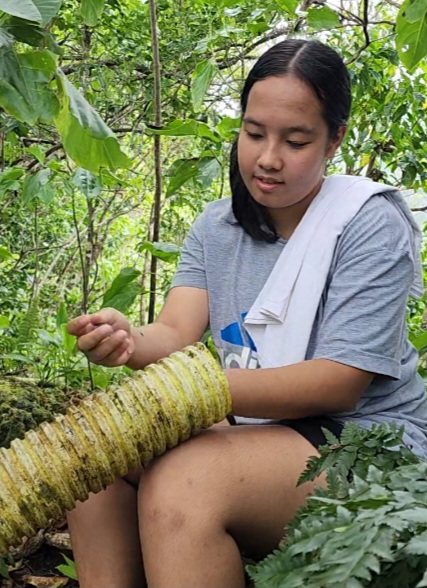Te Ipukarea Society : My turn as an intern: Discovering passion for the environment at Te Ipukarea Society
Saturday 30 December 2023 | Written by Te Ipukarea Society | Published in Environment, National

Dreena Teapa. SUPPLIED/23122931
This week’s Te Ipukarea Society article is written by Dreena Teapa, the recipient of the Dame Margaret Karika Memorial Fellowship in 2023 for topping the Year 12 biology at Tereora College. She would however like it noted that she did not come up with the title!
Year 12, or form 6, came to an end when I completed my final exam. I would describe this year as challenging and inconveniently exhausting. The subjects I focused on were not the most amusing nor interesting. I took it upon myself to be in science classes, which is a needed field required in multiple careers nowadays. I am a silent achiever. I managed to get through 2023 and will soon begin my final year of high school. Thankfully, as the recipient of the Dame Margaret Fellowship, I was given the opportunity to intern at Te Ipukarea Society. I was hoping to find a summer holiday job so I was grateful to receive the internship.
It did, however, take me a few weeks to accept the opportunity. TIS revolves its organisation around biodiversity and the environment (land and sea). Biology is an informative and worthwhile subject, however, the career pathways relating to it was none of my interest. I have rather been fond of studying law when I complete high school. It has been a long-term interest for me, hence my delay in accepting the internship. After some consultation, my mother advised me to take on the opportunity as I can consider possibly studying environmental law as my field of focus. I was then eager to make my final decision and become an intern for TIS.
I have been working in the office of TIS for over two weeks and I have enjoyed this new experience. TIS is a non-government organisation that dedicates its objectives on how future and present changes in the environment and to society will be beneficial and encourage progress in the Cook Islands. The projects and issues that TIS involve themselves in or are concerned about are very important. An example would the seabed mining project that is being professed to the people. There are positive and beneficial outcomes of the proposal, such as monetary support and use. There are then the negatives being the pressurising effect on our marine life. The ocean is a great part of our lifestyle and helps define us as who we are – Cook Islanders.
I have gotten to experience a wonderful but laborious hike into the Takitumu Conservation Area (TCA). TIS has been helping with rat control in the TCA. The TCA is home to the native birds of our beautiful paradise that are peacefully guarded in this area. I got to witness a Kakerori for the first time, considering how long I have lived here. It was rather small but unique in its own adorable way. These majestic birds are bothered by the inconvenient rats that also dwell in the TCA. Rat baiting is an important task carried out by the TCA, TIS and other volunteers to prevent further endangerment of our native birds. It is carried out just prior, and during, the Kakerori breeding season, from September through to October. Starting the work one month in advance reduces the attempts of more rats killing the Kakerori’s offspring. I got to participate in replacing the old rat bait for fresh ones. The bait was either nibbled on or gone. I admire the manpower the goes into replacing and monitoring the rat bait throughout the TCA. The route is rather tiresome but “the best results come from a long effort”.
At TIS, we are involved in a turtle monitoring survey that I find very fascinating. Turtles are endangered species because of the pollution and industrial fishing created by mankind. We should be appreciative that numerous turtles reside in our waters. With a monitoring database, TIS is able to keep a record of turtle that are new, old or that have possibly migrated. It is a very thrilling task that is open to the public’s support, by capturing a photograph of the left side of a turtle’s face, and sending the image to the TIS email to contribute to our database.
I look forward to more that I shall experience during my time at TIS that shall deepen my knowledge and understanding of our environment and biodiversity.















































